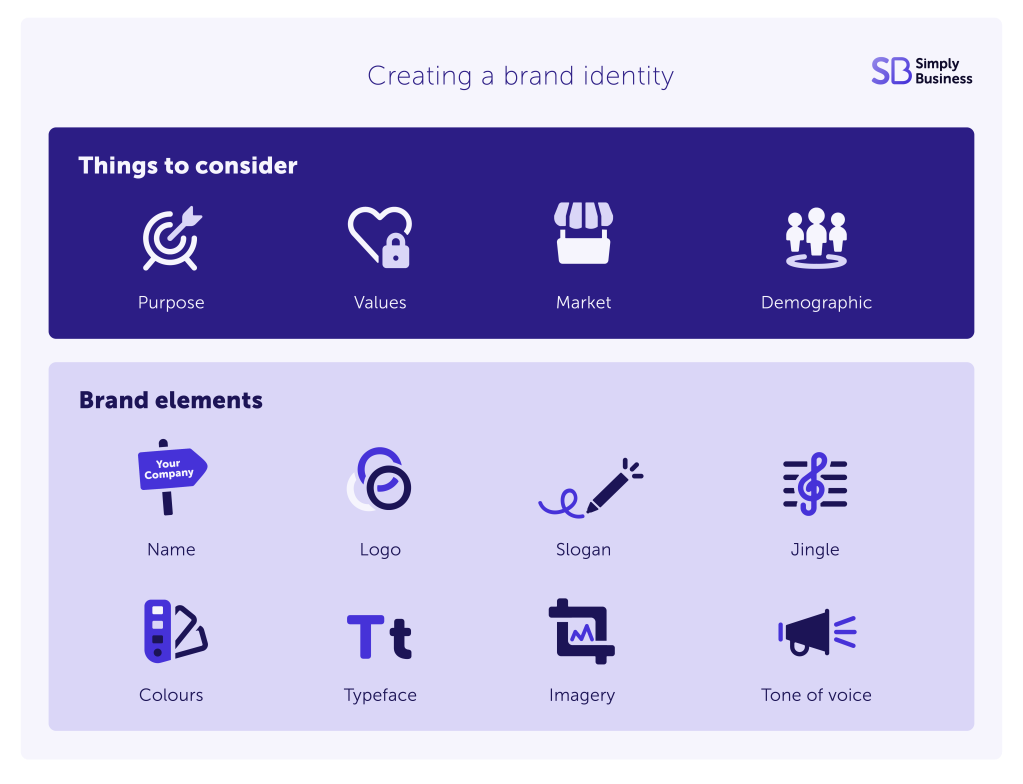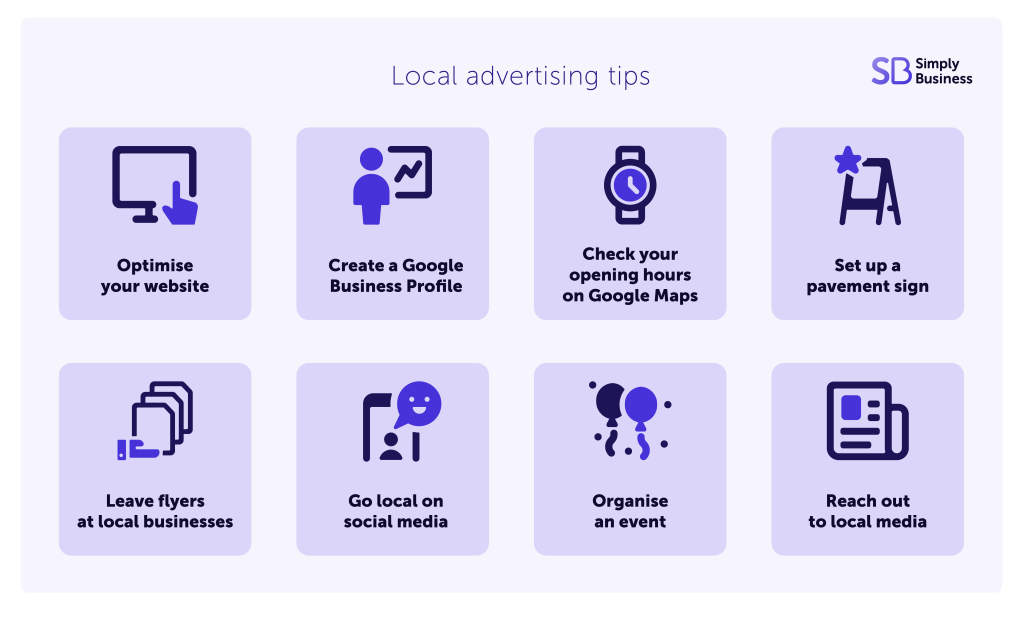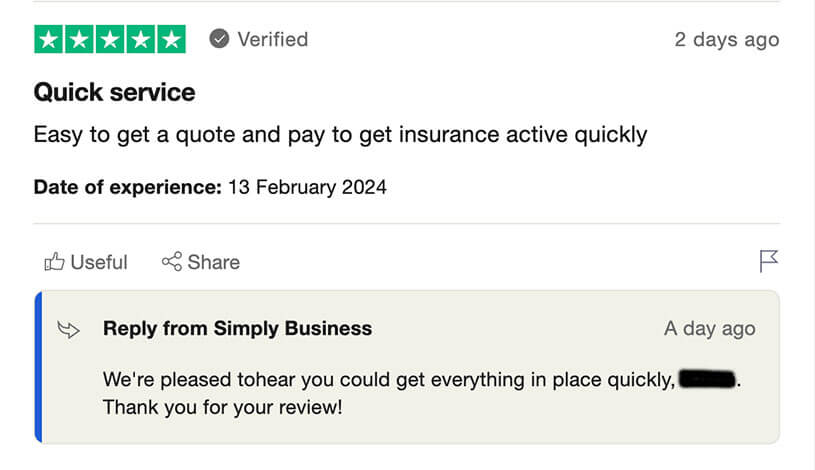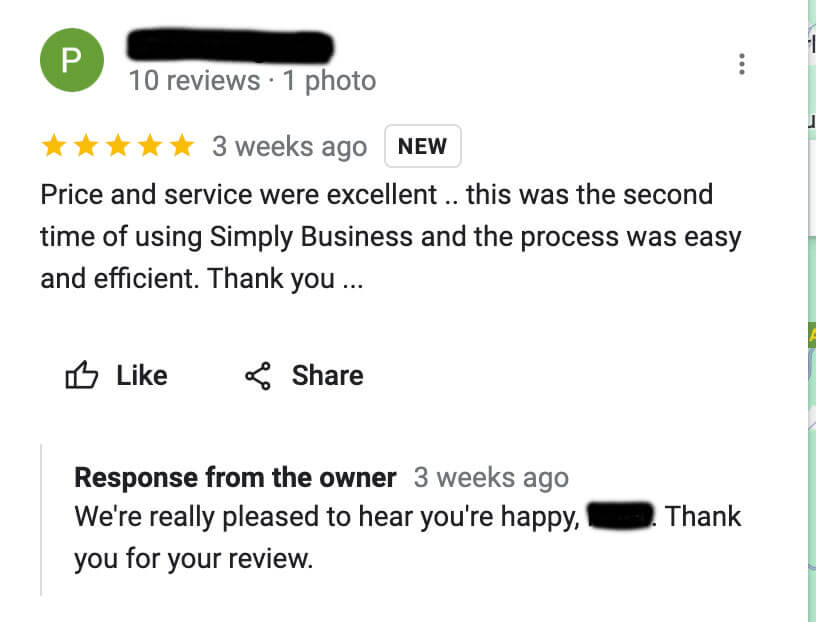If you want to grow your business you need to market it effectively. And to do that you need to develop your brand and create a strategy.
At its core, marketing is about building relationships with your customers. Without marketing, you’ll struggle to get customers to buy your product or use your services.
Small business marketing strategies
When you start out, marketing might be a little ad-hoc – that’s OK. But as you build your business, you should think more strategically about how marketing and promotion can help you grow.
This guide to different marketing strategies has been created to help you reach more customers and take your business to the next level.
Contents:
How to create a brand
What is a brand? A brand is what sets your business apart from your competitors and encourages people to buy your product or service. Having an authentic brand at the heart of your marketing strategy is even more important for small business owners who are so often at the heart of end-to-end operations.
Five things to consider when developing your brand:
- Design a brand identity – this is the consistent look and feel of your business. Everything from a logo and colours to words and taglines, these key elements that go into creating a brand identity will help customers remember you and your business.
- Tell your story – people buy from people, so telling the story behind your business helps you connect with your customers – and tap into their emotions. What’s your inspiration? What problem are you solving? Using storytelling as a marketing tool helps bring your vision to life.
- Communicate your mission – explain what your business does and its purpose. Not only does a clear mission statement help you navigate business decisions, it can also be used to connect your customers to the ‘why’ behind your brand.
- Find your tone of voice – your written communication should be consistent and reflect how you want people to feel about your business. Decisions like whether to use formal or informal language, or how you use humour, are important to consider when developing your brand’s tone of voice.
- Use creative imagery – whether you take your own photos or use stock imagery, the visuals you use in your marketing inform how people perceive your brand. Imagery can also include graphic design elements like icons, patterns, and lines.

Related guides
How to promote your business
There are so many ways to communicate sales and advertising messages to potential customers – these are known as ‘marketing channels’. How you use these marketing strategies will depend on the type of business you have and where your target customers are.
Different marketing strategies
You’ll likely want to use a selection of the following marketing channels, testing and developing a strategy around what works for your business and audience. You can choose from a wide range of digital and offline (also known as traditional) marketing channels to experiment with.
How to advertise your business:
Social media
From Facebook and X to Instagram and TikTok, social media is a way to communicate directly with your customers, potential consumers, and industry in a relaxed and conversational way. Using social media in the right way will help increase awareness of your business which can ultimately lead to an increase in sales.
You can also choose to pay for ads and ‘boost posts’ on social media if you have the budget, although it can be tricky to narrow down the targeting and reach the right people.
However you choose to engage on social, take the time to research how to use social media as a marketing channel and the different platforms available – that’s how you start building your community.

Emails
Email marketing and newsletters help you keep in touch with your customers. They allow you to send advertisements, updates, sales messages, and important information about your services or products.
SEO
Search Engine Optimisation (SEO) involves optimising your business website to get lots of visitors from search engines (like Google, Bing, Yahoo, and DuckDuckGo). SEO can be confusing at first, but there are lots of great SEO tools out there that can help you get to grips with it and really make the most of the boost it can bring your business.
Content and blogs
Content marketing involves creating engaging content to help answer a reader’s question or problem. This content can come in various forms, including blog posts, podcasts, and videos. You might even consider creating YouTube videos such as product tutorials or using the platform for advertising.
Content marketing strategies are closely tied to how you use email, SEO, and social media as channels to get your content in front of readers (and listeners and viewers).
Traditional marketing
Printed marketing materials have been around a lot longer than most of the other marketing channels we’ve mentioned so far. They include everything from flyers, business cards, and pens to water bottles, stickers, and hoodies.
Before you decide which printed marketing materials to spend money on, it’s worth asking yourself a few questions:
- how will my customers use this item?
- how does it relate to my business?
Traditional marketing also includes other offline channels like newspaper ads, billboards, direct mail campaigns, and TV and radio advertising.
Digital marketing ads
While many of the channels listed here come under the ‘digital marketing’ umbrella – simply that you’re using them to reach customers online – it’s worth highlighting a couple of specific advertising channels.
Firstly, pay per click (PPC) advertising is a type of ad you can set up and customers will see when browsing the internet – but you’ll pay every time someone clicks on the link which can be expensive.
And affiliate marketing is when you reach out to publishers (other websites) to negotiate if they’ll include a link back to your website for a fee. Some sites may even link to you for free if your site is well written and aligned to their brand – it doesn’t hurt to ask.
Influencers
Working with influencers and content creators can be another way to get your product or service in front of potential customers. Take the time to identify people with an engaged following on social media (relevant to your business) and see how you could collaborate on a campaign or pay for them to promote your products or services.
Events
Depending on your business or trade, you might use events to attract new customers. Sometimes this might mean getting a pop-up stall at a conference or organising your own event.
For example, a yoga teacher might run retreats while a children’s toy manufacturer might showcase products at trade shows. You could even hold a launch event to release a new product or introduce your brand to a new location.
Word of mouth and networking
Having a network can provide multiple opportunities — your community can support you in troubled times, help your business grow (via word of mouth), and you can use it to exchange ideas.
A solid network can even help reduce costs by helping you find a good deal, or hunt down a piece of equipment that you might need. Crucially, it can help you understand your marketplace in more detail.

Develop your marketing strategy
With so many ways to promote your business, it can be hard to know where to start. And as a small business you’ll probably be trying lots of different things to see what sticks. But as you grow, a thought-out marketing strategy gives you direction and helps you identify goals (and what’s working).
What’s more, writing a good marketing plan gives you a clear direction and a document that you can refer back to regularly – and update along the way.
The best small business marketing strategies start with customer research. This means getting to know your customers and knowing how your niche fits into the current market. You’ll want to make time for:
- market research – do a SWOT analysis to identify your strengths and weaknesses as well as opportunities and threats within the wider business landscape. This is also where you’ll look into what your competitors are doing and how you can get ahead
- customer journey mapping – how does a customer find out about you and what do they see before deciding to part with their cash? Mapping the customer journey helps you decide what content to share at different times – for example in emails and on your website
- developing audience personas – while this may be a task more often reserved for advanced marketers, having a basic understanding of who your customers are is the key to getting your advertising right. A simple persona is just a description of who your ideal customer is – consider demographics, interests, challenges, and motivations
- pricing – a lot goes into pricing a product or service and it can make or break a business. Make sure you look at your costs and competitors to work out a price that gives you a healthy profit
- a local strategy – if your business is location-based (for example a brick-and-mortar shop or fitness studio) then activities like adding a Google Business Profile and keeping your business hours up to date on Google Maps helps customers in your area find out about you. You might also consider leaving flyers with other local businesses or adding a pavement sign

Building (and managing) online reviews
Reviews are an important part of your business’s online marketing as customers can rate your service or product. Using an online review platform like Google or TripAdvisor also lets potential customers know what your existing customers think of your business, whether it’s positive, negative, or neutral.
Asking happy customers to leave a review – perhaps in a thank you email, a delivery note, or when you finish a job – can be a great way to build your online reputation.
Focus on building reviews on one or two platforms. Which ones you choose will depend on your business and where your customers are.
Trustpilot – any product or service-related business can build Trustpilot reviews, and the platform helpfully highlights verified buyers so people know a review is genuine.

Replying to reviews is good practice. Trustpilot 2023.
Yelp – from restaurants and shops to beauty and fitness services, Yelp is another popular review site worth exploring. You’ll need to set up a profile and register if you want to respond to any reviews people leave on Yelp though.
Google – one of the most important parts of Google reviews is that your average star rating from Google, along with a link through to the written reviews, can appear on Google’s search page when someone looks up your business.

Google Reviews show up on your business profile and Google Maps. Example from January 2024.
Facebook – despite being over 20 years old, Facebook still boasts three billion monthly active users (Statista) and is a popular choice for many businesses. Not only can you connect with your audience through the social media platform, you can also encourage people to leave reviews on your Facebook business page.
TripAdvisor – any small business providing hospitality, entertainment, or other customer experiences should make their TripAdvisor listing a top priority.
Yell.com – the online equivalent to the now out-of-print Yellow Pages, Yell is still a popular platform for business reviews.
Checkatrade – this is often the first place people will look when trying to find a tradesperson, so creating a Checkatrade profile and building positive reviews can help you win business.
Beyond online reviews, your brand’s reputation is also about keeping your customers happy. From gathering feedback through surveys (and listening to it) to rewarding loyalty, good customer service in person and online all influence how people feel about your brand.
Related guides:
Product marketing tips
Finally, if your business sells a product rather than a service then there’s a few extra things to consider as part of your marketing strategy.
- How to develop your idea – this creative stage of bringing a product to market is important to get right. Before spending big on launching a new product, you’ll need to do thorough research with focus groups, create a prototype, and do a sample run.
- How the product life cycle works – understanding where your product is in its life cycle will help you know when to adapt your marketing strategy, bring out a new range, or introduce it to a new market. This guide to product life cycle stages and the theory behind it will help you get to grips with the basics.
- How to take photos that sell your product – taking amazing photos will help customers visualise your product and drive more sales. Our product photography tips will help you showcase your products and bring them to an online audience.
Final thoughts – test, learn, and grow
Finding the right marketing strategy for your business takes time.
We’ve introduced a range of traditional and digital marketing strategies here – and some are more costly to implement than others.
The important thing to remember is to have a plan, budget carefully, and regularly reflect on what’s working (and adapt when you need to).
Finding ways to promote your business for free – whether that’s through word of mouth, free software, or online reviews – is the key to making the most of your small business marketing budget while growing your brand.
Ready to set up your cover?
As one of the UK’s biggest business insurance providers, we specialise in public liability insurance and protect more trades than anybody else. Why not take a look now and build a quick, tailored quote?
Photograph: Monkey Business/stock.adobe.com

This block is configured using JavaScript. A preview is not available in the editor.